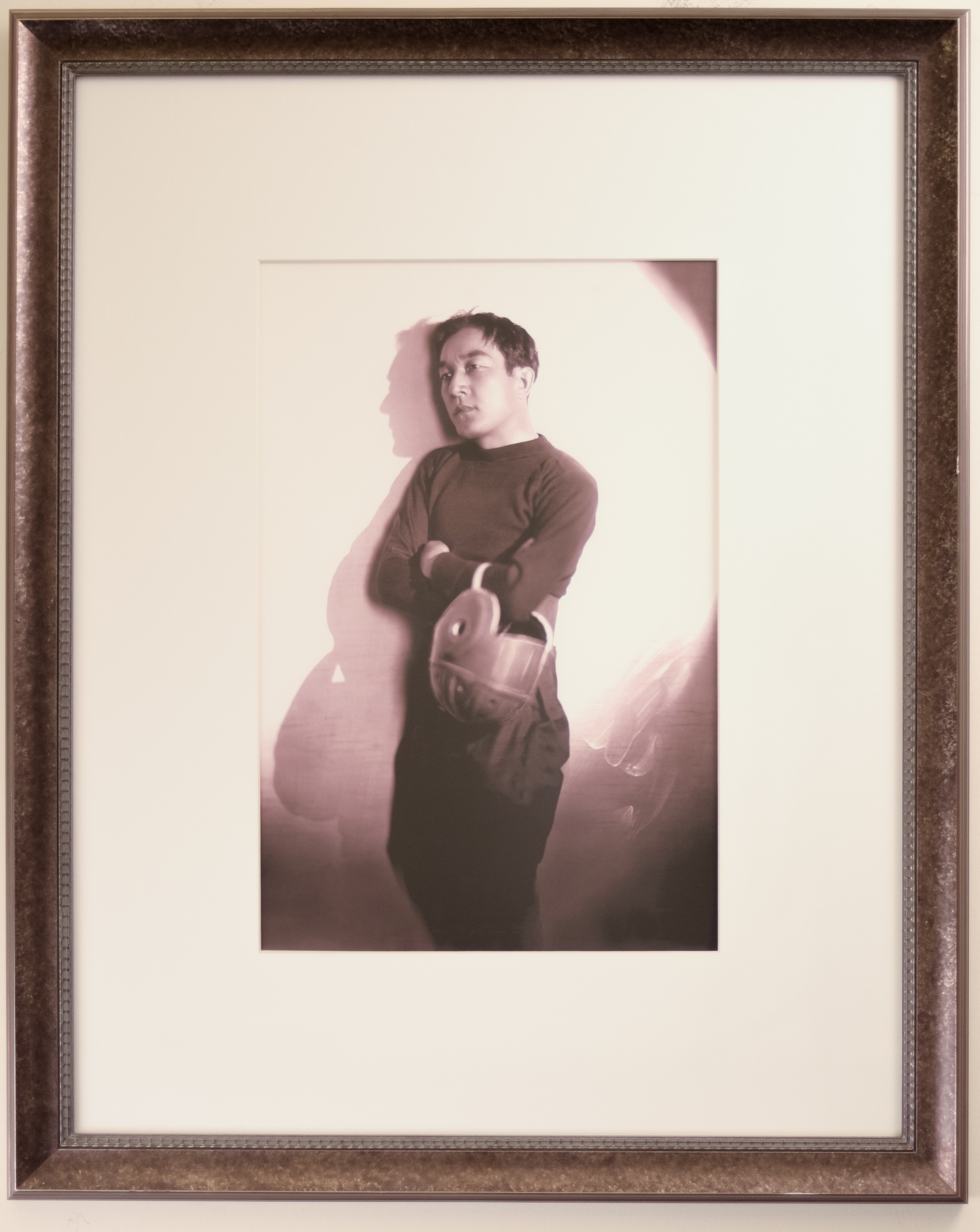All Library locations will be closing early at 5 p.m. Wednesday, December 31 and remain closed Thursday, January 1, for New Year's.
Portrait of Sessue Hayakawa Holding a Helmet
During Hollywood’s silent screen era, Japanese film actor Sessue Hayakawa rivaled Douglas Fairbanks, Charlie Chaplin and John Barrymore in popularity. Hayakawa was one of the highest paid Hollywood stars of his time, making over $5,000 a week in 1915, then two million a year through his own production company during the 1920s. Handsome and flamboyant, Hayakawa gave lavish Hollywood parties that would become legendary. Hayakawa was Paramount’s first choice for the role of the "The Sheik" that launched Rudolph Valentino’s career in 1918. Hayakawa was a remarkable man who lived an extraordinary life. He was a multi-talented individual with many professions and interests. He was an actor, producer, author, martial artist, and an ordained Zen monk. Hayakawa starred in over 80 films and achieved fame on three continents. It was purported, during the height of his success, he gambled away one million dollars at Monte Carlo. Hayakawa achieved success that spanned decades from the early 1920’s to his 1957 academy award nomination for the “Bridge On The River Kwai”. His movie-like life was filled with many adventures and achievements. Hayakawa was honored with a star on the Hollywood Walk of Fame. In this portrait Hayakawa leans casually with arms crossed and staring thoughtfully to the right. Hayakawa is uniformed in a typical 1920’s football garb, complete with a football helmet looped over his left arm. His expression is reflective. Hayakawa is bathed in light which allows his shadow to clearly silhouette his profile.

